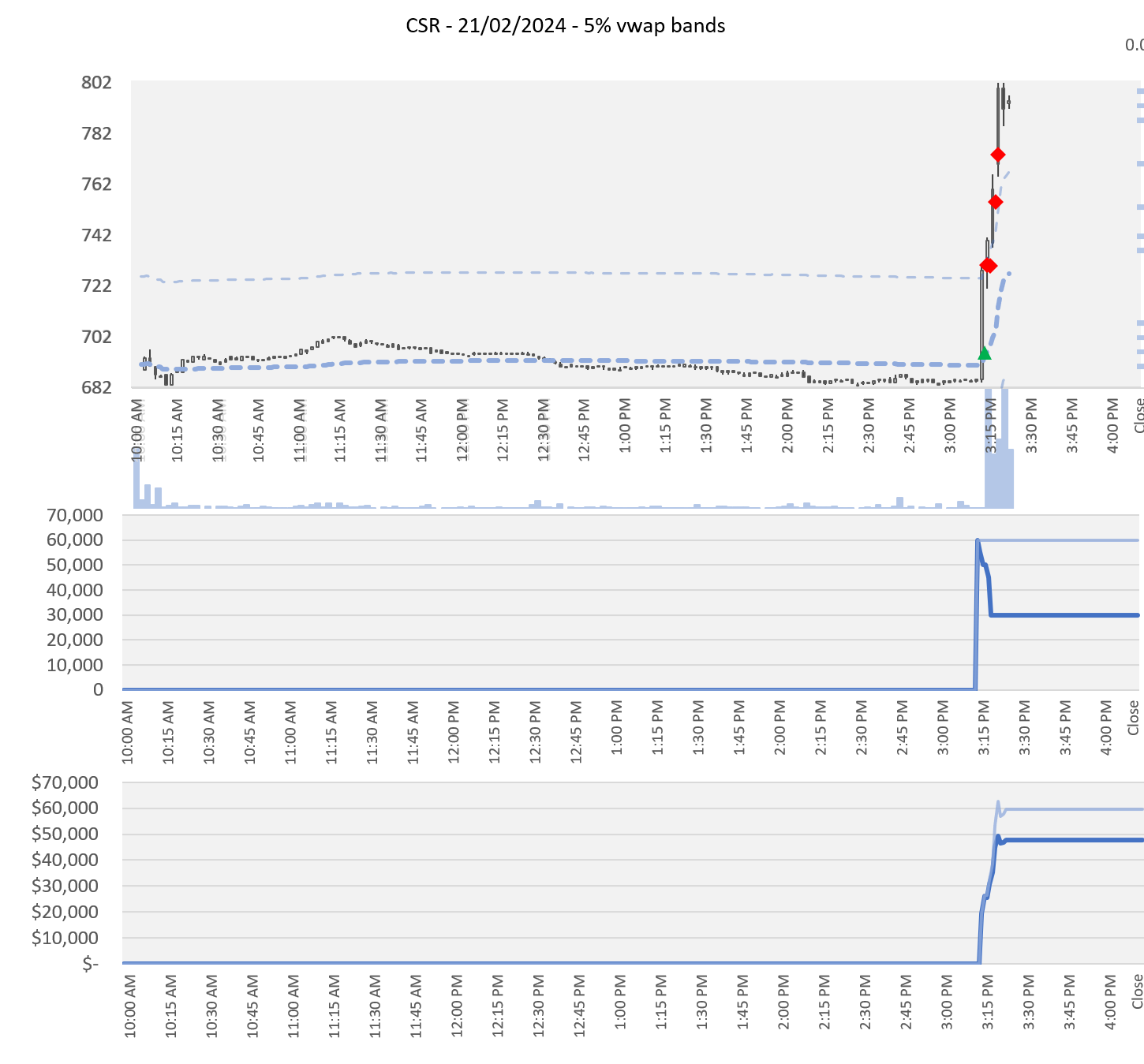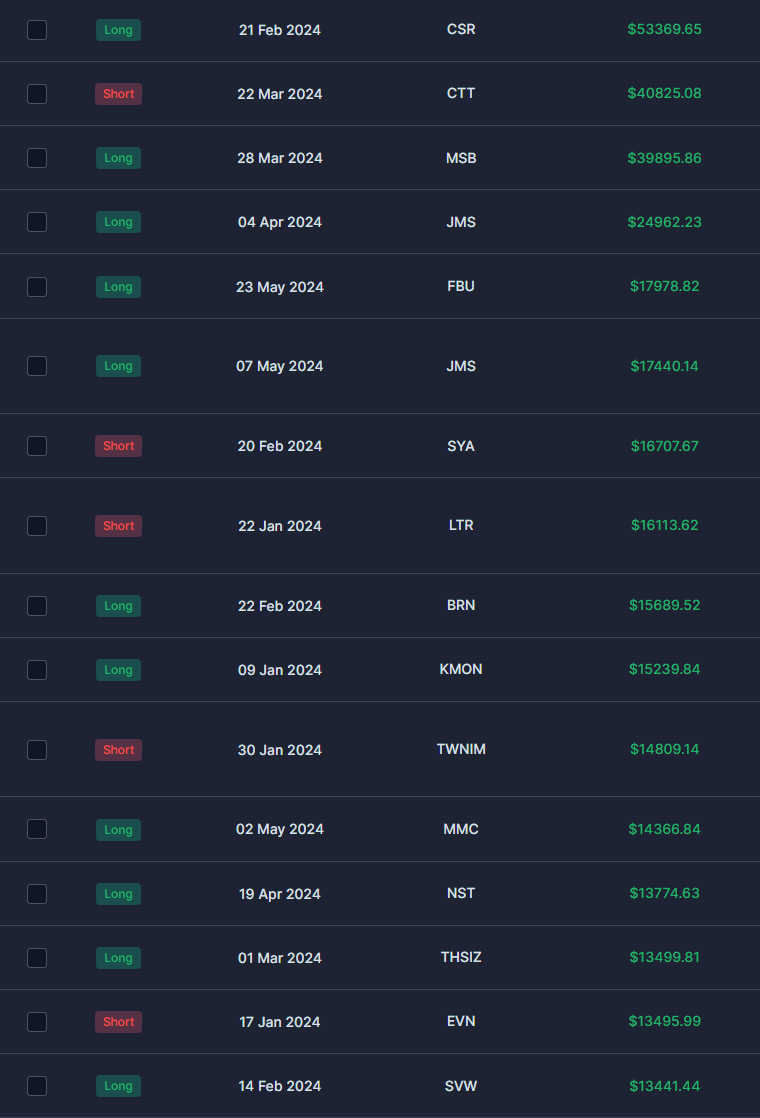What I Learned From Trading The 1st Half Of The Year
Lessons and observations from the Australian market
Sometimes in this game, you feel you can’t do anything right.
Good trades turn to tough beats, bad trades are laid bare, the pressure mounts, and mistakes compound.
That is how I feel right now.
However, it is not good to wallow in self-pity. All I ever know to do in these situations is to study my mistakes and learn lessons rather than bury my head in the sand. The process begins by slowing down, accepting the situation, and reflecting on the data.
A quote from the recent James Clear 3-2-1 newsletter got me spinning:
"In every challenge or even tragedy, there is an opportunity. And if you train yourself to look for the opportunity, you will be able to take control of the situation and even turn it into a positive1. "
As a trader, you are going to face your fair share of challenges and failures. You have to get strong at failure. The feedback from the market is an opportunity to advance knowledge, improve edge, and get better. It’s the only way to keep going.
With the first half of the year in the books, there is no better time to begin this reflection process. It is a chance to check back on those big-picture goals that were set at the start of the year. For me, the year to date has provided lots of positives. I have experienced strong growth. It turns out that despite being an idiot in the short-term, I do know how to make money consistently. I am sure you too have made many good trades this year. So it is important to put any underperformance in context and double down on strengths.
Here are some of the major lessons, observations, and takeaways from trading the Australian stock market over the last 6 months:
Complacency is just as dangerous as “tilt”
When the market is working and trades are profitable, it is easy to get carried away. This is when you are most vulnerable.
The same emotional forces that affect our decision-making when on “tilt” also impact our trading when overconfident. Biases get overlooked. We become blinded to what we are doing and the underlying risk. We stray outside our lane and move away from the very edge that served us so well in the first place.
There was a time in the year when everything was working. Every day trader seemed to morph into a longer-term position manager. From March onwards, you could have made money throwing a dart at Tin, Manganese, Alumina, Bauxite, Niobium, Copper or Silver. You could even get paid for holding Gold stocks! Stocks in these sectors mooned and I was one of these newly excitable Resources holders.
The reality is this: don’t confuse brains with a bull market.
Before long, I had too many positions in the book and the market changed. I was blind to the initial signs of a turn and didn’t adapt. The easy part is getting into stocks but the hard part is managing them correctly. My risk management and exposure were unprepared for any stress testing. Moreover, the overconfidence had seeped into my core day-trading edge and I found myself taking trades that did not stand up to solid scrutiny. Losses on both fronts ensued.
The lessons:
Add an emotional temperature check to the morning routine. This increases self-awareness and addresses any potential overconfidence after a good run.
Build a playbook for Resources position trading. More specifically, form rules around exit management. Has the thesis changed? What is my price exit signal? How does the stock react to important news events? Are we now seeing opportunistic cap raises and liquidity events to cut back all positions?
Update overnight risk management tools and create rules for maximum portfolio exposure.
After a series of stop-outs, re-focus on easy money intraday playbooks.
I do believe it is important to explore new playbooks and timeframes. However, you build them up through stages, testing, and lots of observations.
Overnights are meaningful to the bottom line but they come with an increased loss of control
Year to date, 55% of my P/L year has come from systematic overnight strategies. This is a substantial contributor to performance.
It has taken a lot of work as well as trial and error to get to this point. Team members have helped refine and improve these strategies. However, even with hedging, these playbooks are still victims of a well-functioning market. Everything becomes hard if money is not being put to work. Widening the timeframe opens up higher variance. It is a different game.
Managing the increased uncertainty that comes with holding overnight positions is challenging. How do you act when the market opens down -100 or if there is stock-specific news? The inevitable focus on putting out fires takes you out of the zone from fresh intraday opportunities. One of the big reasons why I love day trading so much is that I can reduce external risk and randomness. I can come in with a clean slate to maximise new catalysts.
The balance between the two has been a learning curve.
The Lessons:
Treat overnights as a completely separate playbook to day trading. They have their specific entry, exit, and risk management criteria. Do not blur the lines.
Automate exits the next day via Algos to reduce anxiety. This also enables the ability to focus on fresh intraday opportunities.
Heed the data after consistent losses in strong setups. This is the first sign that the market health is changing. Play the game when it is working but be quick to adapt. I am not a Quant trader so use my market experience.
These strategies are seasonal. They will come back but must remain patient in the interim.
Overhedge via futures or market ETFs. Everything breaks when overnight volatility picks up.
My overnight discretion sucks. Holding something overnight because it “feels” good or because of a Daily chart setup is not a reason to trade. The data is so overwhelming that I continue to give away money here vs my systematic playbooks.
Losses from “Discretionary Overnights”
The best trades go from the start
No matter the playbook, the best trades go from the start.
The tape should be screaming one way. Real volume coming into the stock shows that the market cares about said catalyst. Being on the right side of the market offers the ability to leverage winners through pyramiding. This is the sweet spot for an intraday trader.
Some plays may take more time than others. Nonetheless, you want to be in a position of strength early on.
Examples from the last few months to illustrate this:
CSR
JMS
LTR
No doubt there is room for improvement in all these trades but this is the immediate price action that all A+ hands should show. Conversely, if I am not seeing this early on, it is a strong indication the trade is likely not ready.
The lessons:
Internalise the heuristic that the “best trades go from the start”.
Increasing use of a time stop in my trades. If I am not right early, cut some. The market has to care. Can always put it back on.
Be comfortable putting on momentum adds in extremely strong books. This is purely based on the tape. It should never drop that price.
This leads nicely to the next point.
Price action is the ultimate truth
Do the work to filter the most meaningful. Then be prepared to completely throw that view away.
Another way of expressing this is “strong conviction lightly held.”
As intraday traders, all that matters is the vote of the market. The job is about growing the equity curve from the bottom left to the top right. It is not about being right, but about being on the right side of the market.
The right framework is coming from a position of uncertainty. Not much is ever certain. As Annie Duke says,
"Incorporating uncertainty in the way we think about what we believe creates open-mindedness, moving us closer to a more objective stance toward information that disagrees with us2.”
Accepting uncertainty creates the flexibility to heed the underlying price action.
Some of the cleanest drives were when I just focused on the chart after doing some initial due diligence e.g. EVN and HLI. Where I overanalyzed, I often didn't fully capture the move.
Most importantly, the biggest rips come from not heeding the price action early. A recent example in LTR is a testament where I formed a negative thesis instead of following the strong book:
Being wrong is unavoidable.
What is completely in your control is taking stops when wrong.
Here are the tags by “missed stop” where I didn’t cut the position in full as per my system:
Lessons:
Loads stop losses in FULL where my idea is wrong. The data shows that holding 1/2 of the original position leads to further losses.
It is my stop because on aggregate it means the stock will move against me. Thus it makes no sense to not get out of everything.
Follow the price action and my signals once the market is open. This is all that matters.
Shorts are hard and have high variance
The biggest traps in this market have come from shorting stocks on news Day 1.
There is nothing more painful than having your face ripped off in a short squeeze event. This doesn’t mean to say they cannot work. However, the market has been doing a great job of gapping significantly which discounts much of the delta and edge.
Examples of some of these downside gaps and traps include NAN on Jan 24th; BPT on 12th Feb; SEK on 13th Feb; BAP on 2nd May; GNC on 6th May; SGM on 7th May; and NUF on 23rd May. There are many more.
Some further lessons and observations:
Shorts have unique variables and should be filtered on a case-by-case basis. Some of these could include liquidity, the surprise factor, time of day, balance sheet, shortbase, and consensus positioning.
The nature of the cycle matters. For instance, in January there was a sharp pullback and nervousness in the market. Shorts worked. Compare this to the current regime with glocal indices trading at all-time highs from March onwards. The market is more willing to look through for FY25.
Shortbases have already built up into these stocks in anticipation. They do their work. Catalysts often provide a liquidity event.
Strategic investors have been buying into these distressed stocks. They don’t go away quickly.
A possible solution is to identify other strategies or entries rather than the crowded Day 1 trade to play the negative news event.
Opportunities always come. You just need to be selective in the interim.
The month is made up of just a few choice opportunities. They always come. The key challenge is enduring the wait with patience and resolve.
Right now, it would do me good to fully heed this message.
Going through this reflection exercise has re-emphasized the strongest trades, playbooks, and their commonalities. Historical grading of setups and their win rates is the first step in giving you an idea of the amount of opportunities to be expected in the next period as well as their quality. It is then all about filtering, execution, and building systems to get better at these plays. Every trader of all styles can go through this process.
Straying outside of the edge is where the damage is done. Where I think people struggle with overtrading, including myself, is because there isn’t one simple answer or one simple type of overtrading. My mentor writes:
“What are the patterns of when you tend to overtrade? What are the commonalities? What are the triggers? It is only by asking yourself these questions can you then devise various ways to improve3.”
There is no one-size-fits-all here.
Lessons:
The market will serve up what it wants and when it wants. Control the process.
Improve trade selection through I) Grading ii) Planning iii) Visualising. Use the tools.
Gravitate to a point where I am only trading the most meaningful where I can truly scale. Refer back to the ASIA acronym.
Create a space between trigger and action.
Reinforce best trades and best practices by going over examples.
Top trades 1H:
(Tradervue doesn’t do numbers so for the truly curious: KM1, 29M, 360 )
Final thoughts
The year often starts with a burst of energy and goal-setting. Then reality kicks in and best intentions fall by the wayside.
Reflect back on the Big Picture Goal.
Goals give clarity. They help remodel the mind toward the habits and routines that must be formed to create meaningful outcomes.
At the start of the year, I wanted to increase my sizing through new daily systems and checkpoints. I am not there yet. This is where I need to direct my attention and energy.
How have you been tracking against your goals over this first half of the year?
P.S. I intend to launch a members subscription service this financial year. Would you be interested in receiving more regular content with specific trade reviews? What do you want to see more of? Tell me in the comments.
Likutei Sichot: The Collected Writings of the Lubavitcher Rebbe.
Annie Duke: Thinking in bets.
Lance Breitstein: The People’s Goat.












"The month is made up of just a few choice opportunities." I've been reminding myself of this one recently as well. Epic post as usual.
Thanks for another splendid article Austin. I've had a career year, and it's been sobering reading your article which will fuel my own writing this week whilst I'm visiting family again in China. Since the start of the new FY, I find myself stuck in a drawdown, a poignant reminder to never get complacent and double down on good habits and strategies. Thank you again for all that you do for us.